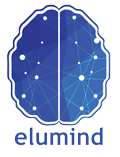Attention Deficit Hyperactivity Disorder (ADHD) is one of the most common neurodevelopmental conditions affecting children worldwide. With symptoms often appearing before the age of 12, ADHD can significantly impact a child’s performance at school—academically, socially, and emotionally. While challenging, ADHD is manageable with the right support system that includes children, parents, teachers, and mental health professionals.
This guide explores how ADHD affects children in school and provides practical strategies for kids, parents, and educators to support success in the learning environment.
Understanding ADHD in Children
ADHD is characterized by a persistent pattern of inattention, hyperactivity, and/or impulsivity that interferes with functioning or development. According to the CDC, around 9.4% of children aged 2–17 years in the U.S. have been diagnosed with ADHD. While every child has moments of forgetfulness or energy, those with ADHD experience these symptoms more frequently and intensely.
Types of ADHD:
- Inattentive Type: Difficulty sustaining attention, following instructions, or organizing tasks.
- Hyperactive-Impulsive Type: Fidgeting, talking excessively, trouble waiting turns, or acting without thinking.
- Combined Type: Symptoms of both inattention and hyperactivity/impulsivity.

Common Symptoms in School-Aged Children:
- Struggles to focus during class or while doing homework
- Easily distracted by noises, classmates, or internal thoughts
- Frequently forgets assignments or misplaces items
- Blurts out answers or interrupts conversations
- Has trouble following multi-step instructions
- Difficulty sitting still or staying quiet during lessons
- Emotional outbursts or frustration with small tasks
Myths and Facts About ADHD in School:
❌ Myth #1 – Kids with ADHD are just lazy or undisciplined.
✅ Fact – ADHD is a medical condition that affects brain function, not motivation.
❌ Myth #2 – They just need more discipline.
✅ Fact – Punishment doesn’t address the root cause; structure and support are more effective.
❌ Myth #3 – All children with ADHD are hyperactive.
✅ Fact – Many have primarily inattentive symptoms and may be quiet or dreamy.
❌ Myth #4 – ADHD goes away with age.
✅ Fact – Symptoms often persist into adolescence and adulthood without proper treatment.

How ADHD Impacts Academic and Social Life
Academic Performance – Children with ADHD often face challenges with reading comprehension, writing, math problem-solving, and test-taking due to attention and memory difficulties. They may underperform despite average or above-average intelligence.
Behavioral Issues – Impulsive actions may result in frequent disciplinary actions or conflicts with peers and teachers. Without understanding the root cause, these children are often labeled as “troublemakers.”
Emotional Struggles – Repeated failures, social exclusion, and misunderstandings can lead to low self-esteem, anxiety, or depression. ADHD kids are more vulnerable to feeling different or “not good enough.”
Social Relationships – Impulsivity and poor emotional regulation can make it hard for children with ADHD to maintain friendships. They may interrupt games, dominate conversations, or miss social cues.
Role of Parents: How to Support Your Child with ADHD
- Get a Proper Diagnosis – Start with a professional evaluation from a pediatrician or psychiatrist. Tools like the QEEG Brain Map (Quantitative Electroencephalogram) offer precise brainwave analysis to identify patterns associated with ADHD.
- Establish Routines – Consistent schedules help reduce anxiety and improve predictability. Set specific times for homework, meals, and bedtime.
- Create a Distraction-Free Homework Space – Designate a quiet, clutter-free area for schoolwork. Use timers and breaks to improve focus.
- Use Positive Reinforcement – Praise effort rather than results. Use reward systems like sticker charts or privileges for completed tasks.
- Stay in Touch with Teachers – Maintain open communication to monitor progress and coordinate strategies.
- Explore Evidence-Based Therapies:
- Neurofeedback: A non-invasive training method to improve brainwave regulation and enhance focus.
- Biofeedback: Helps kids control physiological responses like heart rate and anxiety.
- Photobiomodulation (PBM): Light-based therapy that supports cognitive and emotional regulation.
For Kids: How to Make School Easier with ADHD
- Use Visual Tools – Color-coded folders, sticky notes, and wall charts can help organize tasks.
- Break Tasks Into Small Steps – Instead of doing all your homework at once, try finishing one subject at a time. Take breaks in between.
- Ask for Help – If something is hard to understand, it’s okay to ask your teacher or parent. You’re not alone!
- Use Movement Breaks – Get up and stretch between tasks. Moving helps your brain refocus.
- Believe in Yourself – Having ADHD doesn’t mean you can’t do well. You might just need to do things in a different way—and that’s okay!

Role of Teachers and School Staff
Teachers play a crucial role in creating an ADHD-friendly classroom environment. Here’s how schools can help:
- Early Identification and Referral – Be observant of students who show signs of ADHD and refer them to parents or school psychologists.
- Classroom Accommodations
- Preferential seating away from distractions
- Breaking tasks into smaller parts
- Extra time on tests or assignments
- Use of fidget tools or standing desks
- Differentiated Instruction – Incorporate visual, auditory, and kinesthetic learning styles. Keep instructions clear and concise.
- Positive Behavior Strategies – Use token economies, praise, and clear consequences. Avoid public shaming or punitive approaches.
- Collaboration with Families – Regular updates and consistency between home and school reinforce learning and behavioral strategies.
- Mental Health Services in School – Partner with mental health centers like Elumind to provide:
- Onsite or remote Neurofeedback programs
- Student QEEG Brain Mapping for individualized support plans
- Workshops for staff and parents
Building a Supportive School Culture
- Educate the School Community – Hold awareness days or teacher development workshops to reduce stigma and promote empathy for students with ADHD.
- Mental Health Inclusion Policies – Schools should have clear frameworks for accommodations and intervention protocols for students with ADHD and other conditions.
- ADHD Support Groups – Encourage peer groups or mentoring programs where students can support one another.
When to Seek Professional Help
If a child with ADHD is experiencing severe behavioral issues, anxiety, depression, or significant academic decline, seek help from professionals who offer:
- Comprehensive ADHD assessments
- Customized brain-based treatment plans
- Family therapy and parent training
At Elumind Centres, our team provides:
- QEEG Brain Map to tailor interventions
- Neurofeedback and Biofeedback to improve attention and self-regulation
- PBM and coaching to support emotional health
Conclusion
ADHD does not have to be a barrier to success in school. With compassion, structure, and access to the right tools, children with ADHD can thrive academically and socially. It requires a team effort—from kids themselves to parents, teachers, and mental health professionals.
By embracing neurodiversity and fostering inclusive environments, we not only support children with ADHD but enrich the entire educational experience for all students.
Let’s empower every child to learn in the way that works best for them.








